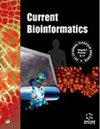Screening Analysis of Predictive Markers for Cytokine Release Syndrome Risk in CAR-T Cell Therapy
IF 2.4
3区 生物学
Q3 BIOCHEMICAL RESEARCH METHODS
引用次数: 0
Abstract
Background: Chimeric Antigen Receptor (CAR)-T cell therapy has emerged as a highly effective treatment for hematological tumors. However, the associated adverse reaction, Cytokine Release Syndrome (CRS), poses a significant challenge. While numerous studies have investigated CRS biomarkers during CAR-T cell therapy, the ability to predict CRS risk prior to treatment initiation remains a crucial yet underexplored aspect. Objective: The primary purpose of this study was to address the issue of limited data, explore an alternative approach using public data to identify predictive markers for CRS risk assessment from RNA-Seq in pre-treatment patients data, and comprehend the inducible mechanisms underlying CRS. Methods: We integrated information from two public databases, the FDA Adverse Event Reporting System (FAERS) for adverse reaction reports of CAR-T cell therapy and the Cancer Genome Atlas (TCGA) for RNA-Seq data on corresponding hematological tumors. Candidate genes were screened by correlation analysis between Reported Odds Ratio (ROR) values and RNA-Seq gene expression levels, and then core factors were identified through stepwise analysis of pathway enrichment, cluster analysis, and protein interactions. Results: Our analysis highlighted the correlation between CRS risk and pre-treatment T cell activation/ proliferation, identifying key genes (IFN-γ, IL1β, IL2, IL6, and IL10) as significant CRS indicators. Conclusion: This study offers a unique perspective on predicting CRS risk before CAR-T cell therapy, circumventing the challenges of scarce clinical data by leveraging analysis of public databases. It elucidates the crucial role of T cell activation/proliferation dynamics in CRS. The analytical methods and identified markers provide a reference for the research and clinical application of CAR-T cell therapy.CAR-T 细胞疗法中细胞因子释放综合征风险预测标记物的筛选分析
背景:嵌合抗原受体(CAR)-T 细胞疗法已成为治疗血液肿瘤的高效疗法。然而,与之相关的不良反应--细胞因子释放综合征(CRS)--带来了巨大挑战。虽然已有许多研究调查了 CAR-T 细胞治疗过程中的 CRS 生物标志物,但在治疗开始前预测 CRS 风险的能力仍然是一个至关重要但尚未得到充分探索的方面。研究目的本研究的主要目的是解决数据有限的问题,探索一种使用公共数据的替代方法,从治疗前患者数据中的 RNA-Seq 中确定 CRS 风险评估的预测标记物,并了解 CRS 的诱导机制。方法:我们整合了两个公共数据库的信息,一个是FDA不良事件报告系统(FAERS)的CAR-T细胞疗法不良反应报告,另一个是癌症基因组图谱(TCGA)的相应血液肿瘤的RNA-Seq数据。通过报告比值(ROR)和RNA-Seq基因表达水平之间的相关性分析筛选候选基因,然后通过路径富集、聚类分析和蛋白质相互作用的逐步分析确定核心因子。结果我们的分析强调了CRS风险与治疗前T细胞活化/增殖之间的相关性,确定了关键基因(IFN-γ、IL1β、IL2、IL6和IL10)作为重要的CRS指标。结论这项研究为预测 CAR-T 细胞治疗前的 CRS 风险提供了一个独特的视角,通过对公共数据库的分析规避了临床数据稀缺所带来的挑战。它阐明了 T 细胞活化/增殖动态在 CRS 中的关键作用。分析方法和确定的标记物为 CAR-T 细胞疗法的研究和临床应用提供了参考。
本文章由计算机程序翻译,如有差异,请以英文原文为准。
求助全文
约1分钟内获得全文
求助全文
来源期刊

Current Bioinformatics
生物-生化研究方法
CiteScore
6.60
自引率
2.50%
发文量
77
审稿时长
>12 weeks
期刊介绍:
Current Bioinformatics aims to publish all the latest and outstanding developments in bioinformatics. Each issue contains a series of timely, in-depth/mini-reviews, research papers and guest edited thematic issues written by leaders in the field, covering a wide range of the integration of biology with computer and information science.
The journal focuses on advances in computational molecular/structural biology, encompassing areas such as computing in biomedicine and genomics, computational proteomics and systems biology, and metabolic pathway engineering. Developments in these fields have direct implications on key issues related to health care, medicine, genetic disorders, development of agricultural products, renewable energy, environmental protection, etc.
 求助内容:
求助内容: 应助结果提醒方式:
应助结果提醒方式:


